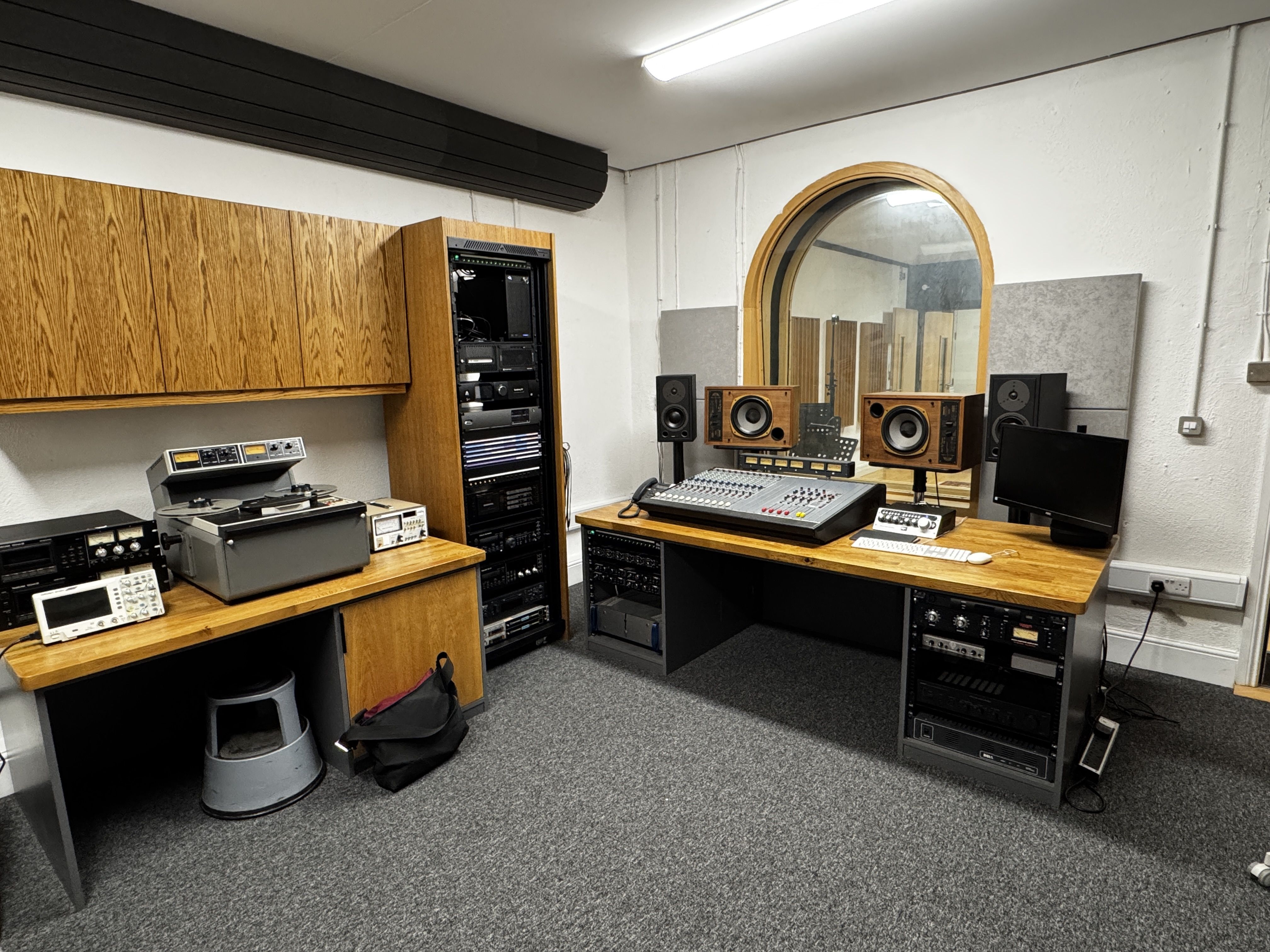Back home after a great trip to Ireland, where I spent a week in Dublin getting stuck into a new research project! Over the course of these academic perambulations, I spent a couple days at the Irish Traditional Music Archive. ITMA, as it’s commonly known, will be a familiar reference to many readers, but for the others, is the largest collection of its kind in the world and an incredible resource for those interested in traditional music. It’s filled with great resources and great people, all of whom have a passion for preservation and is a bedrock institution for traditional music.
While I was there, I got to spend some time with ITMA’s Digital Archivist Adam Girard. Girard has an extensive background in the field, having worked in the Ralph Rinzler Folklife Archives at the Smithsonian (which houses the Moses and Frances Asch collection – an incredibly important collection of recordings – as well as the records of Smithsonian’s Center for Folklife and Cultural Heritage) and then, for many years as the Audio-Visual librarian at Highland Park Public Library in Illinois. After that, he moved to Ireland for graduate school and eventually found himself lecturing at University College Dublin before finding a role at ITMA in 2020. The work he has led since landing in, alongside a cast of others, has radically transformed the scope of ITMA’s work and made its collections far more accessible than ever before.
I started our conversation by asking Girard what kinds of things he’d want Echo readers to know about ITMA and its work. He began by telling me that most of ITMA’s collections come from private collections. Given the extent of ITMA’s holdings, I was curious to know what he thought it was that attracted private donation so frequently and he said he believes that two of the most important factors are the archive’s size and its focus.
But another factor is the quality of their work. With sound recordings, for example, they have a several pronged approach to preservation. “We absolutely do the best that we can to preserve the original media,” he beamed. “So if it's a reel to reel tape, for example, we usually have to clean it, inspect the wind on the tape, remove it from its old acidic original box, put it in an archival acid-free box and store it in the appropriate environment so, if we did ever want to play that tape in the future, it would be possible.”
“When we digitize this sort of audio, we do it at an extremely high standard using the finest equipment available. We calibrate and clean our machines between each transfer and pay very careful attention to the quality of every single transfer to make sure that if we're not able to play a tape again in the future for some reason, we get it right the first time. It’s probably the best set up of its kind in Ireland at the moment.”
The care doesn’t end there. “Not only do we have very specialized training in preservation,” he continued, “we have very knowledgeable specialists who can focus on identification and are able to describe the contents of the materials, which means that objects can be cataloged quickly and properly. This allows our collections to be fully searchable. Our aim is to make as much material as we can free and openly accessible for everyone.”
I asked him about new collections of interest and he cited the recently deposited collection of Tony McMahon’s. A quite large gift that they’re still working their way through, it turns out to be a challenging one because it’s not exactly typical. “In it, you could find almost any type of material. It contains several different audio formats, among them reel-to-reel, CDs, and cassettes, but because of his extensive broadcasting background, there are a number of different video formats as well. There’s also a large amount of print material. But ITMA is perfectly capable of dealing with all that material. We have the expertise, knowledge and technology and we intend to make it all accessible at some point, because,” he added with a smile, “that's what we do here.”
Girard also explained that some of the work they do is unusual for an archive. For example, they are active in the collection of material. “Several years running now, we've both recorded all the events in the hall for the Willie Clancy Summer School and set up a recording studio there for the week to do long-form interviews with tradition bearers. Many of these are getting posted on the website.” This is a particularly interesting range of material, as it illustrates the continuance of tradition in real time.
Girard quickly pointed out that ITMA’s website went through a recent redesign, which has greatly improved the user experience. “Now, it's really easy to browse. You can hop around between areas more easily, so if you wanted to watch some videos or listen to audio, you can do so. But if you'd rather look at biographies of particular people, you can explore in that direction, too. If you have a specific topic in mind, there are several online exhibits to go through as well.”
So how best to take advantage of ITMA’s digital collections? Start at the top and work your way in – the drop down menus at the head of the ITMA homepage are your first stops. The “Collections” menu offers audio and video playlists, image galleries and printed & manuscript materials that let users explore ITMA’s holdings in a more curated fashion. The “Explore” menu allows you to explore the archive through different subject areas, including “people,” “places,” “tunes,” “songs,” “dances,” “decades” and “instruments.” If you’re interested in a fuller sort of experience, the “Exhibitions” menu has some excellent options. For example, “Saothar” will take you to a page that showcases compositions by contemporary composers in the traditional idiom each month. “Drawing From the Well” is another monthly series that connects artists with archival material. There, you’ll find episodes that feature Christy Moore, Matt Malloy, Paddy Moloney, Martin Hayes and several others. “From the Bridge” (which I’ve written about here in the past) explores Irish traditional music’s history in New York. Created with the assistance of Don Meade, it includes a superb and extensive range of recordings, photographs, and videos. There are several other exhibitions to see as well. And of course, users can search all of ITMA’s holdings by clicking on the magnifying glass on the top all the way to the right.
Traveling to Dublin is always a great opportunity to call into the Irish Traditional Music Archive, which is right on Merrion Square. Its director Liam O’Connor is doing an outstanding job helming the ship, and its people, like Girard, are doing yeoman’s work bringing their holdings to everyone via the internet. I urge readers to check out their website because it has so, so much for traditional music fans to enjoy. There’s lots of ways to explore and it’s all 100 percent worth the time! Visit their website here.
Incidentally, an ITMA delegation will be over to New York City on Oct. 7 for a screening of “Tommie Potts: The Fireman Fiddler of the Coombe.” Co-presented by ITMA and the Irish Arts Center, the film is a portrait of Potts, who was one of Ireland’s most important 20th century fiddle players. The evening’s guests will include the film’s director Macdara Yeats (whose outstanding album “Traditional Singing From Dublin” I wrote about last year), uilleann piper Seán Potts (ITMA’s office manager), retired FDNY battalion chief Eddie Boles, and Aoife Nic Cormac, host of RTÉ Radio 1’s long running program “The Rolling Wave.” This will be a fabulous evening and a great way to better get to know the sort of work ITMA supports – book your ticket now at the Irish Arts Center.








